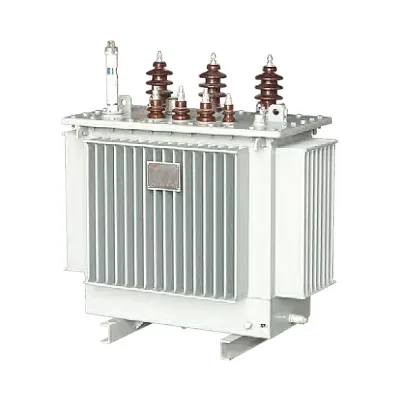SF6-Free Switchgear: The Sustainable Solution for a Greener Power Grid

I. Why Replace SF₆? The Environmental Imperative
-
Greenhouse Effect: A single kilogram of SF₆ traps as much heat as 23,500kg of CO₂ over a 100-year period. -
Leakage Risks: GIS systems, despite maintenance protocols, inevitably leak small amounts of SF₆ (industry estimates suggest 0.1%–1% annual leakage rates), contributing to cumulative emissions. -
Regulatory Pressure: The EU’s 2014 F-Gas Regulation phased out SF₆ in many applications, and similar restrictions are emerging globally (e.g., the Kigali Amendment to the Montreal Protocol targets high-GWP gases).
II. Key Technologies Enabling SF₆-Free Switchgear
1. Solid Insulation (Solid-Insulated Switchgear, SIS)
-
Zero SF₆ emissions: No gas means no leakage or environmental impact. -
Compact and modular: Smaller footprint than AIS, suitable for urban/suburban substations. -
High reliability: No moving parts (like gas-filled compartments) reduce failure risks. Examples: ABB’s SafePlus, Siemens’ NXPLUS C-SIS, and China’s Pinggao ZSS series.
2. Vacuum Interruption + Air/Solid Insulation
-
Proven vacuum technology: Vacuum interrupters have zero SF₆ dependency and long lifespans (up to 30,000 operations). -
Air-insulated variants (AIS): Use air as the insulating medium (e.g., for low-voltage or less space-constrained applications). -
Cost-effective: Lower material costs compared to SF₆ or complex solid insulation. Examples: Schneider Electric’s SM6 AirSeT (vacuum + SF₆-free gas alternative), GE’s g³ (green gas for grid, though not fully SF₆-free, is a transitional solution).
3. SF₆ Alternatives (e.g., “Green Gases”) with Air Insulation
-
Lower GWP: g³ has a GWP of <1 (vs. SF₆’s 23,500), significantly reducing emissions. -
Backward compatibility: Can be retrofitted into existing GIS designs. Limitations: Still relies on synthetic gases (though less harmful), and full elimination of fluorinated compounds remains the ultimate goal.
III. Performance and Reliability: Closing the Gap with SF₆
-
Dielectric Strength: Solid insulation (epoxy resin) and optimized air gaps in vacuum-based designs now match or exceed SF₆’s performance in MV applications (12kV–40.5kV). -
Arc Quenching: Vacuum interrupters and hybrid gas mixtures (like g³) ensure rapid, reliable arc extinction, even under high fault currents. -
Maintenance: SF₆-free systems typically require less upkeep (no gas pressure monitoring, no adsorbent replacement) and have longer component lifespans (e.g., epoxy resin insulation lasts >30 years).
IV. Applications and Market Adoption
-
Urban Infrastructure: Cities like Paris and Singapore have mandated SF₆-free GIS for new substations to meet carbon neutrality goals. -
Renewable Energy: Solar and wind farms use MV SF₆-free switchgear to connect distributed generation without adding greenhouse gas emissions. -
Industrial Plants: Factories with strict ESG commitments opt for SF₆-free solutions to align with sustainability targets.
V. Future Outlook: Scaling and Innovation
-
Material Science: Advances in nano-engineered epoxy resins and hybrid insulation materials to further improve dielectric performance and reduce costs. -
Digital Integration: Embedded sensors (e.g., partial discharge monitors, temperature sensors) enabling predictive maintenance and real-time health monitoring. -
Global Standards: Organizations like IEC and IEEE are developing unified testing protocols for SF₆-free technologies, ensuring interoperability and reliability.
Αναζήτηση
Κατηγορίες
- Art
- Causes
- Crafts
- Dance
- Drinks
- Film
- Fitness
- Food
- Παιχνίδια
- Gardening
- Health
- Κεντρική Σελίδα
- Literature
- Music
- Networking
- άλλο
- Party
- Religion
- Shopping
- Sports
- Theater
- Wellness
Διαβάζω περισσότερα
ทำความรู้จัก RELX บุหรี่ไฟฟ้า ตัวเลือกยอดนิยมของคนรุ่นใหม่
ในยุคที่บุหรี่ไฟฟ้ากลายเป็นกระแสนิยม หนึ่งในชื่อที่ถูกพูดถึงมากที่สุดคือ relx บุหรี่ไฟฟ้า...
Cloud Monitoring Market : Trends, Analysis, and Competitive Landscape 2025 –2032
"Future of Executive Summary Cloud Monitoring Market: Size and Share Dynamics
CAGR Value...
探索 RELX 6代電子菸:新一代科技與卓越口感的完美結合
隨著電子菸市場的蓬勃發展,RELX作為領先品牌之一,一直致力於提供優質且創新的電子菸體驗。近期,RELX...
Electrostatic Chucks Market 2025 | Growth, Trends and Advancements By 2032
Executive Summary Electrostatic Chucks Market Size and Share: Global Industry Snapshot
The...
Analyst: Alabama Catches Preparing Crack Throughout 2023 Time
The 2023 soccer program breaks favorably in just prefer of Alabama in accordance in the direction...



